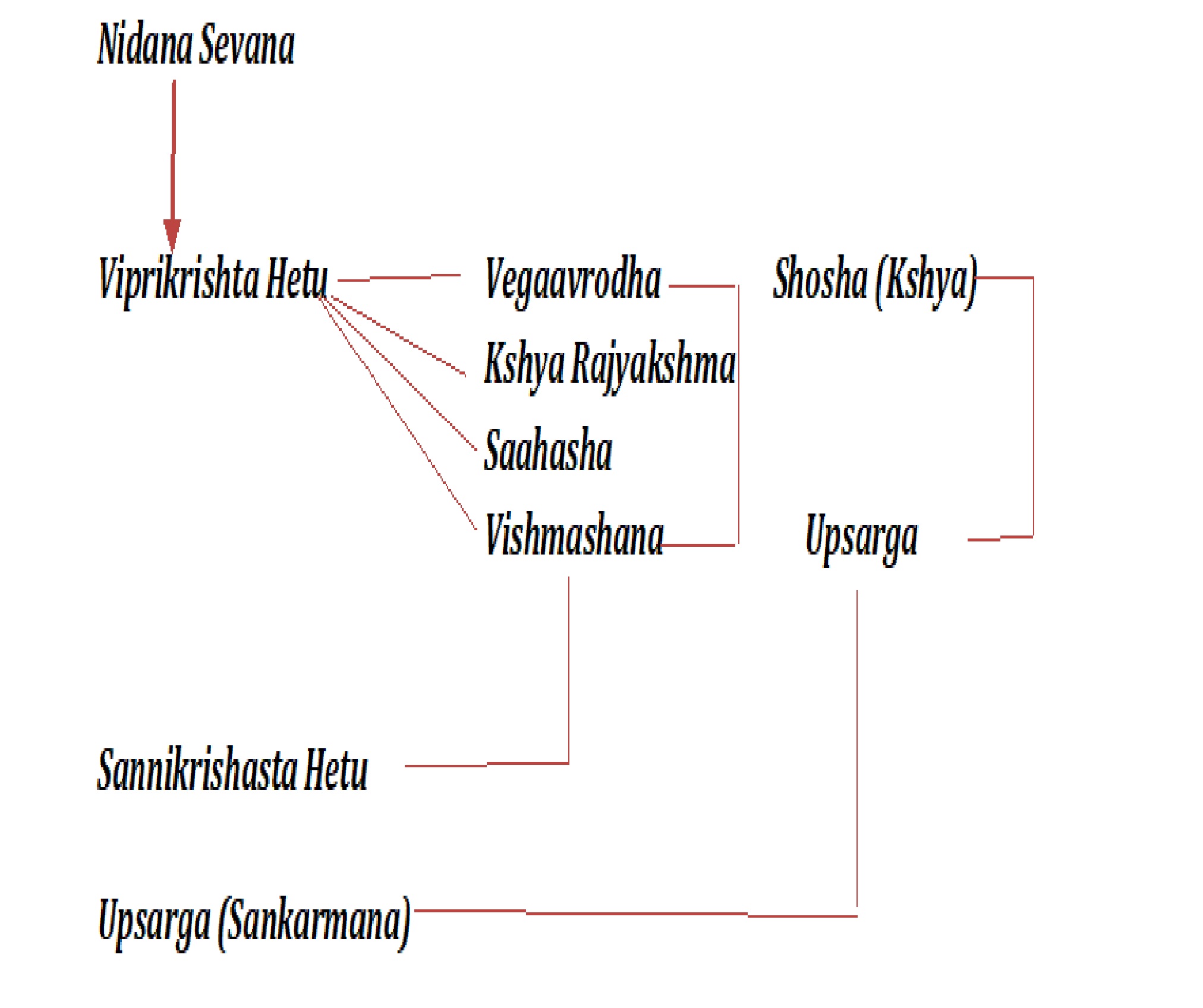A Conceptual Study on Rajyakshma through Ayurveda
DOI:
https://doi.org/10.47070/ayushdhara.v10iSuppl4.1337Keywords:
Rajayakshma, Yakshma, Jwara, Kshaya, Roga, Pulmonary Tuberculosis.Abstract
One of the Asthamahagadas described by Acharya Charaka and known as the "king of the disease" is Rajyakshma. Due to its multisystem involvement and syndromic expression, it has traditionally been difficult to identify and treat. Therefore, it is crucial to fully comprehend Nidana and Samprapti prior to making treatment plans. Rajayakshma has been linked to numerous immunodeficiency syndromes. However, a closer look at the symptoms reveals that it more closely resembles a multisystem respiratory disease. As well as being classified as an Aupsargika Vyadhi, the ailment also had a number of predisposing elements or Chaturvidha Nidana. Tridoshas and Sapta Dhatu are induced as a result of Nidana indulgence. In the present period, pulmonary tuberculosis can be linked to Rajyakshma, which affects the Pranavaha Srotasa. Although the pathophysiology of Rajayakshma and pulmonary tuberculosis differ, their clinical profiles are remarkably similar. Western medicine focuses primarily on infectious diseases, how they spread, various diagnostic techniques, and WHO-recommended antibiotics. The paper's main goals are to fully convey the fundamental ideas of Rajayakshma's Hetu and Samprapti and how they affect the Pranavaha Srotasa in relation to pulmonary tuberculosis. Rajayakshma is considered the king of all diseases. It is formed with two words: Raja (king) and Yakshma (decay), which means fraying condition of huge magnitude. The symptoms of Rajayakshma include Sahasa (extreme tension and strain), Vegasandharana (restraining natural impulses), Kshaya (decreasing Dhathu), and Vishamashana (resisting natural urges). It is a Shosha that Madhyama Rogamarga Vyadhi has manifested. The Tridosha and the Sapta Dhatu are impacted by the emergence of Ekadasha Roopa. The Nidana and the Samprapti are given a lot of attention in the classics of Ayurveda, since they are crucial to comprehending Chikitsa. Chikitsa is Nidana Parivarjana and Samprapti Vighatana; it is nothing. Rajayakshma's knowledge was compiled by exhaustively searching the primary Ayurvedic literature. Rajayakshma is a rare illness, and the disease hierarchy is as described by Sahasajanaya Rajayakshma and Vega Sandarana. Janya Rajayakshma, Kshaya Janya Rajayakshma, and Vishamashana Janya Rajayakshma is one of the four categories involved in Nidana. In modern medicine, Rajyakshma may correlate with pulmonary tuberculosis. Though there is a difference in the pathogenesis of tuberculosis and Rajyakshma, the clinical picture of both is quite similar.
Downloads

Downloads
Published
Issue
Section
License
Copyright (c) 2023 AYUSHDHARA

This work is licensed under a Creative Commons Attribution-NonCommercial-ShareAlike 4.0 International License.


